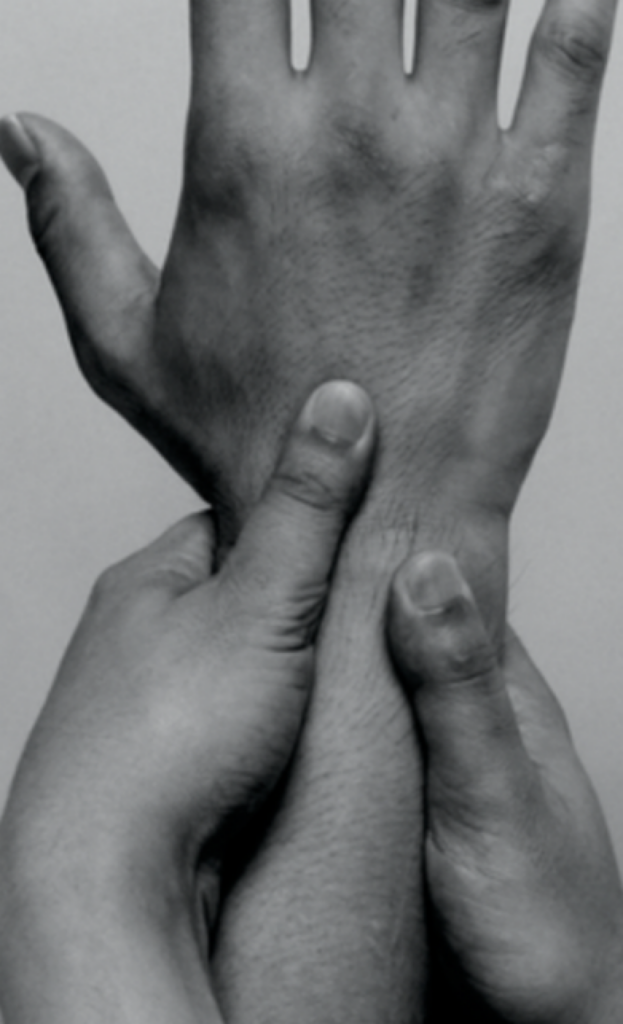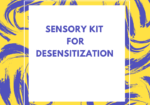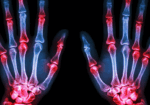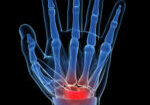Ballottment Test for Wrist DRUJ
Reliability and Validity Analysis of the Distal Radioulnar Joint Ballottement Test
Nagashima, M., Omokawa, S., Hasegawa, H., Nakanishi, Y., Kawamura, K., & Tanaka, Y. (2024). Reliability and validity analysis of the distal radioulnar joint ballottement test. The Journal of Hand Surgery, 49(1), 15–22. https://doi.org/10.1016/j.jhsa.2023.10.006
The Skinny: Distal radioulnar joint (DRUJ) wrist instability can be caused by triangular fibrocartilage complex (TFCC) injuries. This joint injury can be clinically determined with the ballottement provocative test. There are a handful of tests to determine DRUJ instability, but the ballottement test is an accurate manual test for DRUJ instability. This study looks at the validity of the ballottement test for TFCC injury using a 3-D electromagnetic tracking device. For this study, the examiner grasps the radius and the carpal bones while the other hand grasps the ulnar head and loads are applied in the volar and dorsal directions, which is different from the non-holding method in which the radius is grasped without grasping the carpal bones while the other hand grasps the ulnar head and loads are applied in the volar and dorsal directions.

Image from: Onishi, T., Omokawa, S., Iida, A., Nakanishi, Y., Kira, T., Moritomo, H., Ruxasagluwang, S., Kraisarin, J., Shimizu, T., & Tanaka, Y. (2016). Biomechanical study of distal Radioulnar Joint Ballottement Test. Journal of Orthopaedic Research, 35(5), 1123–1127. https://doi.org/10.1002/jor.23355
In the Weeds: This study had 25 healthy participants (10 men and 15 women) and 8 participants with TFCC injuries (6 men and 2 women). Three orthopedic hand surgeons were utilized in the study to perform the ballottement test. A 3-D electromagnetic tracking device was used to measure the rotation angle of the forearm during the test.
Bringing it Home: This study was able to demonstrate that the ballottment wrist test using the holding technique was able to detect TFCC foveal tears with 80% accuracy 82% sensitivity, and 77% specificity. Due to the high diagnostic accuracy, the ballottment test was identified as an effective way to determine mild or moderate DRUJ instability.
Rating: 4/5
This study had several limitations:
1) The sample size was small which isn’t the best representation
2) The study did not include those with DRUJ instability above grade 2
3) There were no comparisons for age and sex
4) The individual joint differences were not included
5) The load applied to the ballottment test was not measured
6) Joint laxity was not assessed
Despite the limitations, the study does prove that the ballottment test using the holding technique was able to detect TFCC foveal tears with 80% accuracy, allowing healthcare professionals to have an appropriate measure of TFCC foveal tears.
Photo: Onishi, T., Omokawa, S., Iida, A., Nakanishi, Y., Kira, T., Moritomo, H., Ruxasagluwang, S., Kraisarin, J., Shimizu, T., & Tanaka, Y. (2016). Biomechanical study of distal Radioulnar Joint Ballottement Test. Journal of Orthopaedic Research, 35(5), 1123–1127. https://doi.org/10.1002/jor.23355
1 Comments
Leave a Comment
More To Read
Sensory Kit for Hypersensitivity
Written by Melissa Miller Introduction After injury or surgery, nerves in the skin and surrounding the injured area can become overly sensitive. This can cause pain or an unpleasant sensation by stimuli that would not typically cause discomfort. For example, a light touch from a shirt or a certain material can feel like needles to…
Read More7 Tips for your Osteo Arthritis Patients!
7 Tips for your OA Patients! Managing Osteoarthritis in the Hand Our hands are one of the most intricate structures in the human body. They are composed of a network of tendons, ligaments, and nerves that make it possible to perform daily tasks such as unlocking a door, peeling an egg, or sending an email…
Read MoreSensory Processing in People With and Without Tendinopathy
Emilee Sanders, OTS Sensory Processing in People With and Without Tendinopathy: A Systematic Review With Meta-analysis of Local, Regional, and Remote Sites in Upper- and Lower-Limb Conditions Rio, E, Sandler, J., Cheng, K., Moseley, G. L., Cook, J., & Girdwood, M. (2021) Sensory processing in people with and without tendinopathy: A systematic review with meta-analysis…
Read MoreCarpal tunnel syndrome and its association with body mass index, wrist ratio, wrist to palm ratio, and shape index
A literature review of carpal tunnel syndrome and its association with body mass index, wrist ratio, wrist to palm ratio, and shape index Madani, A. M., Gari, B. S., Zahrani, E. M. A., Al-Jamea, L. H., & Woodman, A. (2022). A literature review of carpal tunnel syndrome and its association with body mass index, wrist…
Read MoreSign-up to Get Updates Straight to Your Inbox!
Sign up with us and we will send you regular blog posts on everything hand therapy, notices every time we upload new videos and tutorials, along with handout, protocols, and other useful information.







very to the point and helpful…. thanks
I alway go to you info for up to date evidence and practical and easy to follow demo.
Hand Therapist; NHS . UK